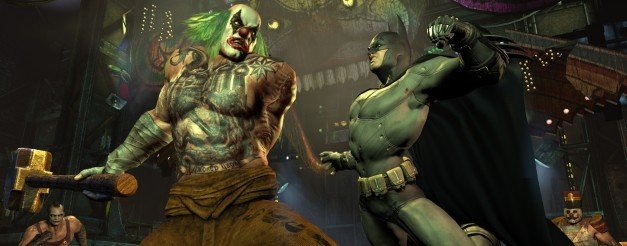
Back in 2009, Rocksteady got Batman right. They got his big punching fists right, they got his flappy cape and pointy cowl right, and they got his brooding, mirthless menace bang-on right. But there was one thing they never did with the man-bat, on his long adventure around the wards and grounds of Arkham Asylum. He never got to stand on top of a big building, looking philosophical at the scum infesting his beloved Gotham city. In my mental image, he's got his hands on his hips. Your Bat-fantasy may vary.
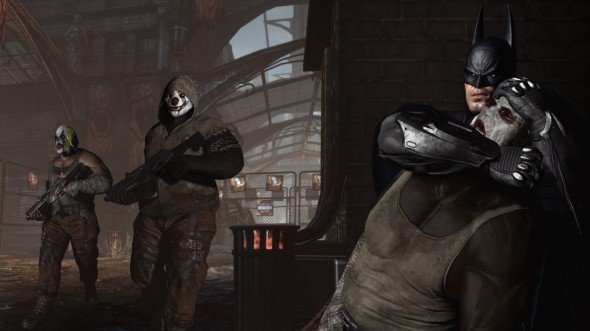
Arkham City brings us that Batman. A rapid-fire recap on the setup: one year after the events at the Asylum, Batman's role in dealing with the outbreak has been downplayed, and woven to political advantage by the dubious Quincy Sharp. Riding a wave of popularity, newly-elected Mayor Sharp enacts bold measures to deal with the overflow of thugs and insane supervillains.
Give them a slice of Gotham – a walled area within which criminal anarchy reigns. The only rule? Try to escape, and you'll be killed by the armed forces of Hugo Strange.
Hugo is one of Batman's oldest adversaries, first introduced as a mad scientist in 1940. Over the story's complicated set of continuities and multiple universes, he's reliably done what no other villain has: figured out Bats' secret identity. This is the world you're dealing with: Strange in control, the Joker seemingly relegated to a gang leader with a stubborn cough, and Two-Face trying to establish a new regime of fear. These charismatic villains lead gangs of thugs who dress in homage to their leaders – but their influence spreads to the fabric of city itself, in turf wars.
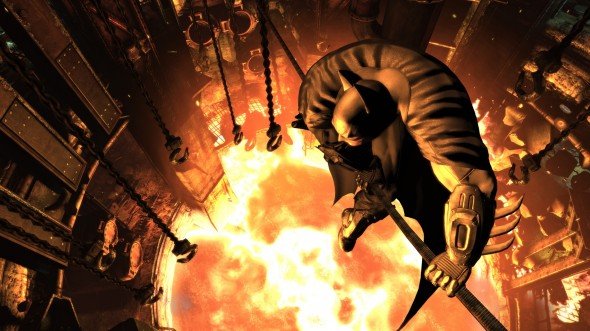
These power struggles change the flavour of an area. When one gang owns a section of the city, it warps the buildings. So when you revisit some den you've been to before – I'm told – it'll be completely different. An example? In the opening half hour, we visit Gotham Courthouse while it's under Two-Face's control, and the building is scarred across one side.
No one's using the word sandbox. Arkham City's madhouse might be more open, but sandbox carries connotations of arsing about. And the Batman can be accused of many things, but arsing about isn't one of them. There's openness, but this is designed to be a tightly told story, and the optional stuff isn't going to be collection quests. Everything flows from the characters. Well, the Riddler's side mission is a collection quest, but that's because he's the Riddler.
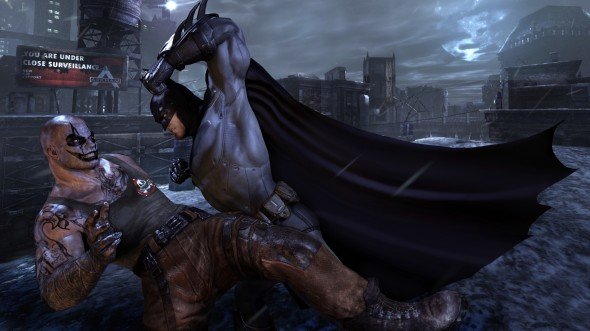
Paul Dini's writing skills have been retained for the sequel. This is a very good thing – his expert knowledge of Batman's world is clear in the game. Take the appearance of the basement-dwelling Calendar Man, who bases his crimes around specific dates. If you visit Calendar Man in the game when it's St Patrick's Day in the real world, he'll tell you the story of someone he killed on that day. Bats never gets a holiday.
The biggest gaming news, reviews and hardware deals
Keep up to date with the most important stories and the best deals, as picked by the PC Gamer team.
This was made possible by Dini's almost needlessly prolific output, along with comical exchanges with thugs that toy with the player's desire to hear more. When Harley Quinn leaves you in the care of her underlings, their conversation tests your nerve at the same time as being funny. “What's he going to do, drop a smoke bomb?” asks one of them, as you're being told by an on-screen prompt which button to press to drop a smoke bomb.
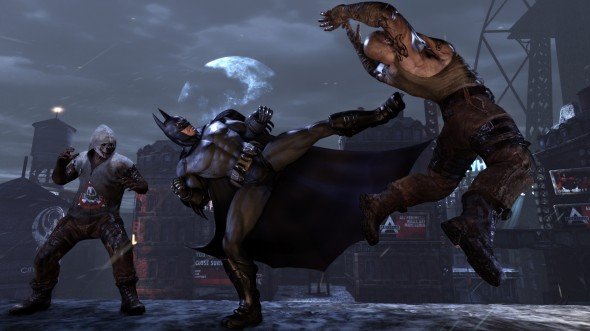
Arkham City retains the same simple but oddly satisfying punch-counter combat of Arkham Asylum. It's a system that couldn't carry an entire game, but that's the point: punching is just for unarmed thugs. Armed enemies and hostage-takers need to be dealt with using a more subtle approach. By punching through walls and knocking them out.
Perhaps that was a bad example of subtlety, but it's a good example of how the weapons have shifted purpose: the explosive spray-gel of the first game isn't just for specially-marked weak walls now, as Batman is beefed up enough to barge through them. You can, however, work it into your combat moves, flipping through a crowd of thugs, spraying gel on the floor, and remotely detonating it.
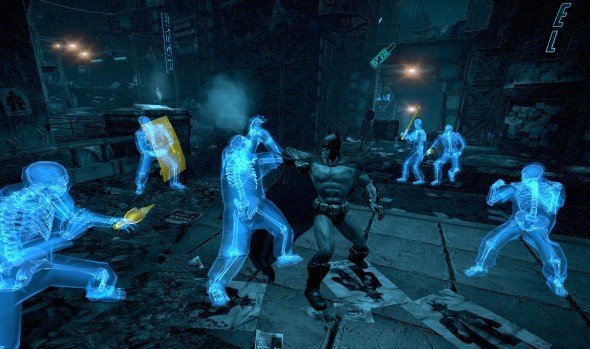
Then, there's the enhanced detective work, which feels a little... well, cleverer. You're not just following particles of smell around – one of Arkham Asylum's less convincing moments. From the short demo I was shown, you're discovering real evidence and tying it together. Spot the point of entry of a sniper bullet, then find where it hit the floor, and you can draw a line from the two and extrapolate to the location of the gunshot. Detective vision also lets you plan your attacks, by drawing your attention to the gun-toting red thugs, who need to be despatched first.
Rocksteady got Batman right. They got the villains right. And now, it feels like they're getting Gotham City right. That's pretty much all there is to get right.

